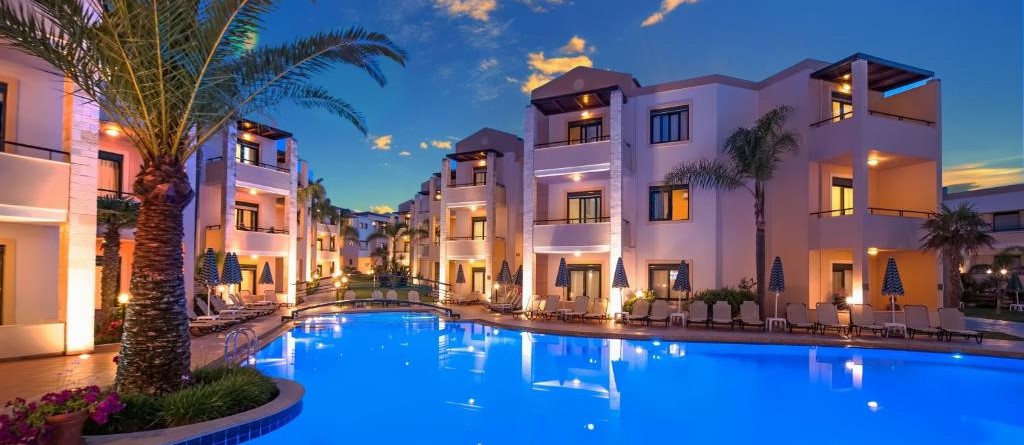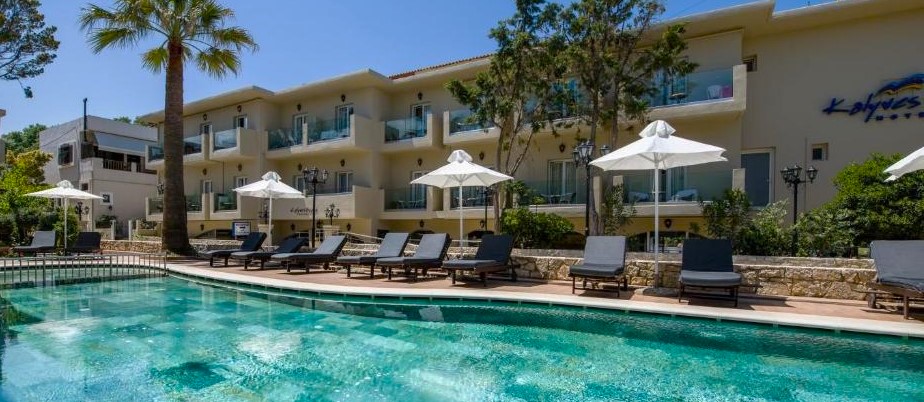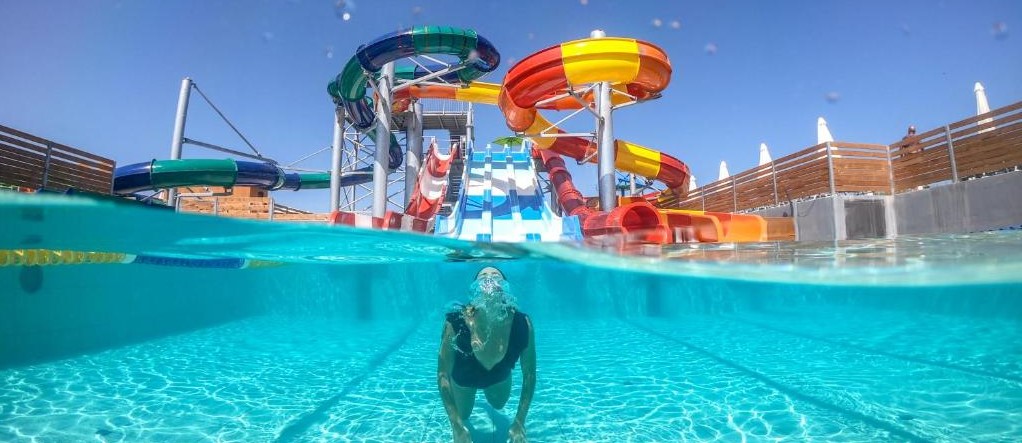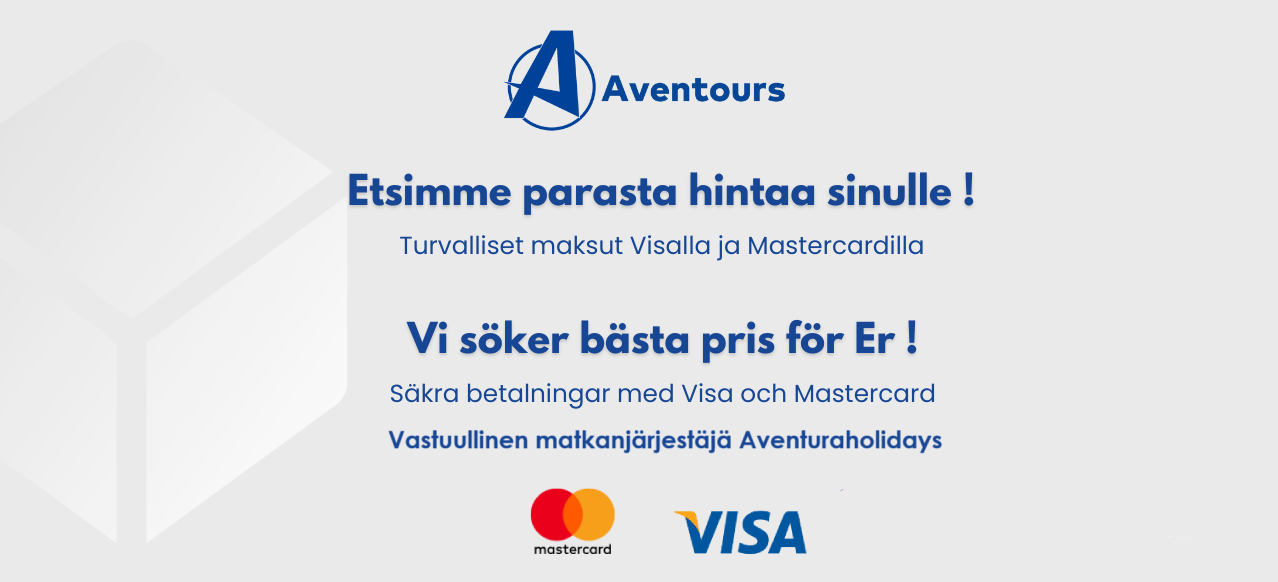KREETA
Lennot maakunnista
SUORAT LENNOT 2026
Kreeta
Suomalaisten suosikkilomakohteena vuosikymmenestä toiseen säilynyt Kreetan saari yllättää aina uudestaan laajalla kulttuuri-, nähtävyys ja aktiviteettitarjonnallaan. Yli 8300 neliökilometrin kokoiselle Kreikan suurimmalle saarelle mahtuu uskomattoman paljon koettavaa ja nähtävää. Kreeta ihastuttaa niin luontopoluilla viihtyviä patikoijia ja kasviharrastajia kuin myös laadukkaan ruuan ja juoman ystäviä.
Kreetalla on monivaiheinen historia minolaisen kulttuurin kehdosta osaksi Itä-Rooman valtakuntaa. Venetsialaisilla on myös suuri rooli Kreetan infrastruktuurin kehittymisessä, sillä heidän hallintakaudellaan Kreetasta tuli yksi merkittävimmistä kaupantekopaikoista Venetsialaisten imperiumissa. Myös Ottomaanien aika ja toinen maailmansota näkyvät katukuvassa rakennuksin ja monumentein.
Rantalomakohteena Kreeta palvelee niin lapsiperheitä kuin eksoottisia helmiäkin etsiviä matkailijoita. Euroopan suurimpiin lukeutuva Prevelin palmumetsä tuo palan Karibiaa Välimeren rantamaisemiin. Elämyksiä kaipaava löytää Kreetalta myös turkoosina hohtavan Baloksen laguunin ja vaaleanpunaisena helmeilevän Elafonisin uimarannan. Risteilypäivä Gramvousan merirosvosaarelle sopii kaikenikäisille matkaajille innokkaista snorklaajista auringonpalvojiin.
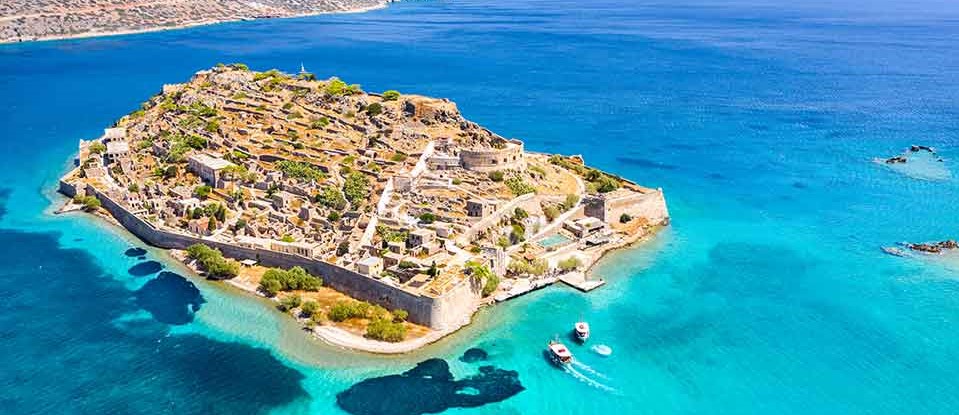 Spinalonga
Spinalonga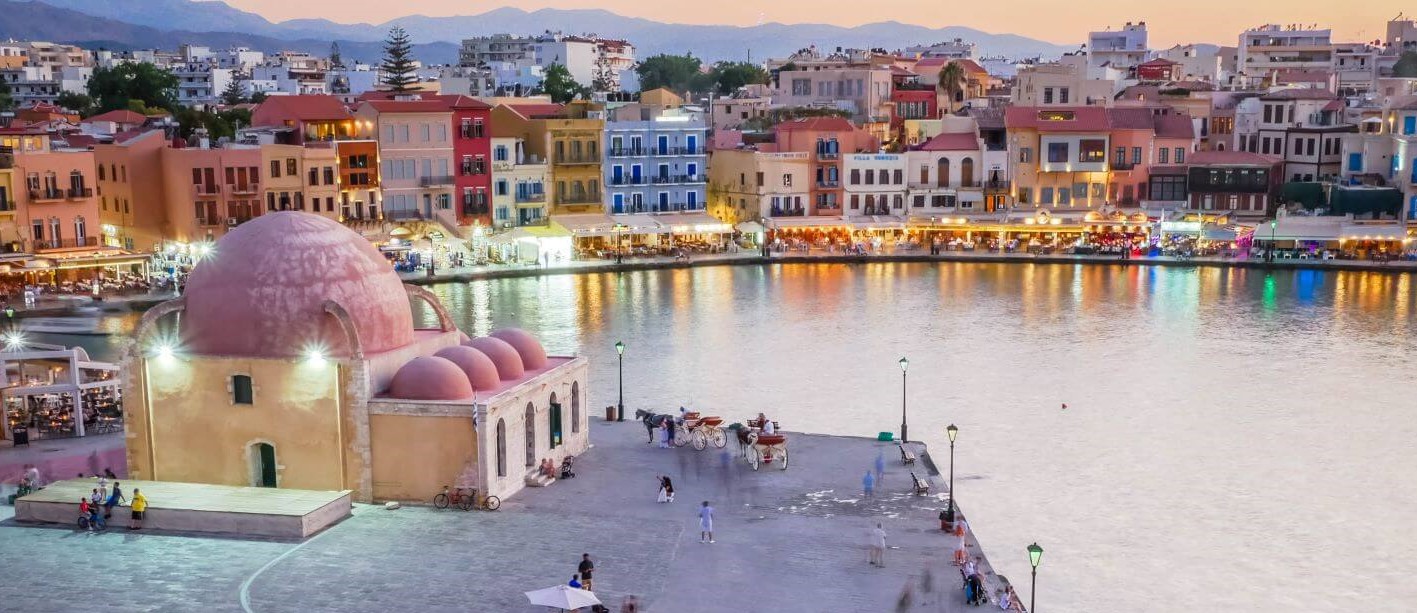 Chania
Chania.jpg) Samaria rotko
Samaria rotko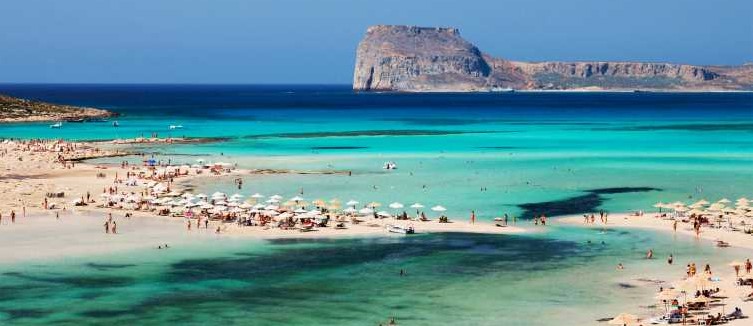 Balos
Balos.jpg) Agios Nikolaos
Agios Nikolaos Vai
Vai
Suositut hotellit
Perustuu asiakasarvosteluihin ja varausten määrään
Lisätietoa
Palveluiden laajuus ja kätevä saatavuus ovat avainsanoja Kreetan suosioon. Julkinen liikenne vie matkailijoita niin kaupunkeihin kuin rantakohteisiinkin tasaisin väliajoin. Taksimatkat ovat Suomen hintatasoon nähden edullisia ja Kreikkalainen ruoka on suomalaisten matkailijoiden makuun. Ilmasto on keväästä syksyyn lämmin eivätkä sadepäivät yllätä sesongin aikaan usein.
Kasviharrastajien näkökulmasta Kreeta on maanpäällinen paratiisi. Saarta jakaa itä-länsi-suunnassa kahteen kilometriin yltävä vuoristojono, joka jakaa Kreetan vehreään pohjoispuoleen ja kuivempaan eteläpuoleen. Tämän lisäksi pohjois-etelä-suunnassa vuoristoja halkoo sadat rotkot, jotka ovat luoneet vuosituhansien saatossa Kreetalle omia erityisiä mikroilmastoja. Mikroilmastojen myötä monet kasvi- ja eläinlajit ovat selvinneet luonnonmullistuksista kuten viimeisimmästä jääkaudesta nykypäivään saakka. Pelkästään kotoperäisiä kasvilajeja Kreetalla esiintyy lähemmäs 200.
Kreeta tarjoaa myös loistavat retkeily- ja patikointimaastot. Yksi suosituimmista reiteistä lienee Lefka Ori -vuoristossa sijaitseva 16 kilometriä pitkä Samarian rotko. Myös 11 kilometrin mittainen vaellus Imbroksen rotkossa on retkeilijöiden suosiossa. Kevyempää vaellusta voi lähteä tekemään esimerkiksi Askifoun tasangolla sijaitsevalle ottomaanivallan aikaisen puolustuslinnan raunioille.
FRANGOKASTELLO. Pienessä Frangokastellon kylässä, Kreetan etelärannikolla on ihania pieniä tavernoita, hyviä rauhallisia uimarantoja sekä kuuluisa Frangokastellon linnoitus 1300-luvulta. Matkaa Frangokastelloon Libyanmeren rannalle on 55 km Haniasta ja 80 km Rethymnonista. Matkalla kannattaa poiketa myös naapurikylässä Chóra Sfakíonissa.
ELAFONISI BEACH. Kreetan kuuluisimpia rantoja on heleän vaaleanpunaisena hohtava Elafonisi. Rannalle pääsee vuokra-autolla, taksilla tai bussilla Hanian keskustasta.
VAI BEACH. Kreetan suurin palmumetsä Vai Beach on pieni pala Karibiaa Välimeren rannalla. Alueelle tehdään englanniksi opastettuja päiväretkiä.
PREVELIN PALMUMETSÄ. Karibian tunnelmaa on tarjolla myös lähempänä Hanian ja Rethymnonin kaupunkeja. Päiväretken Prevelissä voi viettää uimarannalla loikoillen ja tutustuen Prevelin näyttävään ortodoksiluostariin.
SEITAN LIMANI BEACH. 20 kilometrin ajomatkan päässä Haniasta, Akrotirin niemimaalla sijaitsee todellinen auringonpalvojan paratiisi, Seitan Limani. Kulku uimarannalle kulkee jyrkkää polkua pitkin, joten pakkaathan hyvät kengät mukaan.
KNONNOKSEN PALATSI. Minolainen kulttuuri kukoisti Kreetalla pronssikaudella noin vuosina 3100–1100 eaa. Knossoksen mutkittelevassa palatsissa pääsee tutustumaan esihelleeniseen arkkitehtuuriin sekä sen ajan ihmisten elämään.
SAMARIAN ROTKO. Euroopan pisimpiä rotkoja edustava Samarian rotko on matkailijoiden ykkössuosikki vaelluskohde. 16 kilometrin pituisia vaellusretkiä järjestetään pääsääntöisesti englanniksi. Kysythän oppaalta, mikäli suomenkielisiä retkiä toteutetaan lomasi aikana.
ARKADIN LUOSTARI 25 kilometrin päässä Rethymnonin kaupungista sijaitsee ortodoksinen Arkadin luostari. Unesco on tunnustanut Arkadin luostarin Euroopan vapausmonumentiksi ja siellä asustaa nykypäivänä seitsemästä munkista koostuva yhteisö, joka pitää huolta alueesta.
HANIAN VANHAKAUPUNKI. Venetsialaisten rakennuttama satama-alue, Ottomaanien aikaiset rakennukset ja kiehtovat mukulakivikujat kutsuvat matkailijaa hengittämään satoja vuosia vanhaa arkkitehtuuria. Hanian vanhan kaupungin ympäristössä on ihania putiikkeja, tavernoita sekä museoita, joissa riittää nähtävää useammaksi päiväksi.
BALOS. Turkoosin sävyissä hohtava Baloksen laguuni on matkailijoiden suosikkikohde. Balokselle kannattaa lähteä risteilyaluksella, joka poikkeaa myös Gramvousan merirosvosaarella.
FORTÉTZA-LINNOITUS. Rethymnonin tärkein maamerkki on venetsialaisten rakennuttama Fortétza-linnoitus. Valtava rakennelma on toiminut historiassa muun muassa turkkilaisen hallinnon keskuksena. Retkellä linnoitukseen kannattaa poiketa myös Rethymnonin arkelologisessa museossa.
SPINALÓNGA. Leprasiirtolana toiminut Spinalóngan saari on monelle tuttu Victoria Hislopin kirjoittamasta kirjasta Saari. Saarelle lähtee kesäaikaan tunnin väleinen matkailijoita kuljettavia veneitä Eloúntan ja Plákan kylistä.
SAKSALAISSOTILAIDEN HAUTAUSMAA. Malemen kylässä, vajaan 20 kilometrin päässä Hanian keskustasta sijaitsee toisen maailmansodan aikainen saksalaissotilaiden hautausmaa. Saksalaisen järjestön ylläpitämälle alueelle on haudattu 4500 sotilasta. Näyttävällä kukkulalla sijaitsevalle hautausmaalle on maksuton pääsy.
LIITTOUTUNEIDEN HAUTAUSMAA. Soudanlahdella, lähellä Hanian lentokenttää, sijaitsee liittoutuneiden sotilaiden hautausmaa. Hautausmaa on Välimeren rannalla rauhaisalla paikalla ja alue on helppokulkuinen. Maksuton pääsy.
Kreetalla on rantaviivaa yli 1000 kilometrin verran. Pitkälle rantaviivalle mahtuu monenlaisia lahtia ja poukamia hiekka- ja mukulakivirantoineen. Mikäli vietät lomaasi Hanian alueella, rantahiekkansa puolesta hienojakoisimmat ja kävijämääriltään rauhallisimmat rannat sijoittuvat Hanian kaupungin ja Agia Marinan lomakylän väliin. Agioi Apostoloin pienet rannat kuten Paralia Agii Apostoli, Iguana Beach sekä Hrisi Akti ovat käymisen arvoisia ja niille pääsee kulkemaan kätevästi paikallisbusseilla. Alueella on ihania pieniä rantabaareja, joista saa ostettua muun muassa kreikkalaista mustaa jääkahvia freddo espressoa omaan makuun sopivaksi makeutettuna. Loistava valinta paahtavaan hellepäivään rannalla!
Rethymnonin kaupunkia reunustaa yksi yhtenäinen 12 kilometrin pituinen ranta, josta parhaat palvelut löydät rannan länsipäästä. Alueen hiekka on hienojakoista ja vesi suurimmilta osin hiljalleen syvenevää. Pohjoistuulien puhaltaessa syvemmällä veteen saattaa muodostua virtauksia, joita kannattaa varoa mennessään pidemmille uintimatkoille.
Hersonissoksessa majoittuessasi paras ranta, pitkä ja hitaasti syvenevä Stalis sijaitsee noin 5 kilometrin päässä lomakohteesta. Hersonissos on loistava täyden palvelun kohde golfaukseen ja rentoutumiseen. Kylä on harvakseltaan asuttu ja sieltä on vain 25 kilometrin matka Kreetan pääkaupunkiin Iraklioniin.
Useille kaukaisemmille rannoille pääsee lomakohteista julkisilla kulkuneuvoilla, mutta osaan kohteista on kuljettava vuokra-autolla. Huomioithan, etteivät vuokra-autojen vakuutukset korvaa kaikkia sorateillä autoihin tulleita vaurioita. Esimerkiksi Baloksen rannalle pääsee autolla, mutta mikäli huonokuntoisella pikkutiellä kulkiessasi autoon tulee vaurioita, vakuutus ei välttämättä kata niitä. Suosittelemmekin lähtemään Baloksen laguunille Kissamoksen satamasta laivalla. Laivoja kulkee päivittäin eikä lippuja tarvitse varata etukäteen.
Lähes kaikki Kreetan nähtävyydet ovat saavutettavissa vuokra-autolla, taksilla tai julkisilla kulkuneuvoilla. Jos auton vuokraaminen mietityttää, jokaiselle lomapäivälle on tarjolla myös opastettuja bussiretkiä ympäri Kreetaa. Retkibussit kulkevat niin Knossoksen palatsille, vaaleanpunaiselle Elafonisin uimarannalle kuin myös vaelluksille rotkojen pohjia pitkin.
Suurien kaupunkien ympäristössä linja-auto on edullinen ja kätevä vaihtoehto liikkumiseen. Haniassa lähiliikenteen että kaupunkiliikenteen bussiasemat sijaitsevat lähellä toisiaan Kidonias-kadulla. Rethymnonissa bussiasema sijaitsee rannalla, kävelymatkan päässä Fortétza-linnoitukselta länteen. Iraklionissa on kaksi bussiasemaa. Hanian ja Rethymonin suuntaan lähtevät bussit lähtevät Leof. Ikarou –kadulta, läheltä Iraklionin satamaa.
Alla esimerkkejä taksien hintatasosta. Hinnat vaihtelevat vuorokauden ajan mukaan. Kaikissa takseissa ei ole taksamittareita, joten sovithan tulevan matkan hinnan jo lähtiessä.
Hanian vanha kaupunki – Hanian lentokenttä n. 25 €
Hanian vanha kaupunki – Kato Daratso n. 10 €
Hahian vanha kaupunki – Platanias n. 17 €
Kaikissa Kreetan suurissa kaupungeissa on laaja valikoima kreikkalaisia ja kansainvälisiä vaateliikkeitä sekä pienempiä puoteja ja marketteja. Ostoksien sekä tunnelman perässä kannattaa lähteä tutustumaan kiertäviin markkinoihin, joiden valikoimassa on käsitöiden lisäksi tuoreita vihanneksia, kuivattuja yrttejä, paikallisia juustoja sekä oliiveja.
Käsitöitä on tarjolla nahka- ja pellavatuotteista pitsiliinoihin sekä luonnon pesusieniin. Matkamuistokojuista saa ostettua niin postikortit, magneetit kuin rantavaatteetkin loman ajaksi.
Suurin ja etenkin lapsiperheiden suosiossa oleva tavaratalo Jumbo on edullinen ja monipuolinen ostospaikka. Jumbo sijaitsee 4 kilometrin päässä Hanian vanhasta kaupungista ja sinne pääsee kätevästi kulkemaan paikallisbussilla rannikon lomakylistä.
Jos tahdot viedä kotiin tuliaisiksi kreikkalaisia makuja, suosittelemme ostamaan pullon aleponmännyn pihkalla maustettua retsína -valkoviiniä. Viinin kylkeen sopii hyvin graviera- juusto, josta saa kotona paistettua pannulla ihanaa saganakia. Erityisen ylpeitä kreetalaiset ovat kahteen kertaan tislatusta pontikastaan, tsikudiasta. Sametinpehmeä tsikudia sopii tarjoiltavaksi muun muassa hunajalla kuorrutettujen omenasiivujen tai appelsiinikakun, portokalopitan kera.
Moni jää kaipaamaan kreikkalaisten salaattien makumaailmaa loman jälkeen. Salaattien salaisuutena on laadukas kylmäpuristettu oliiviöljy yhdistettynä kirpsakkaan omenaviinietikkaan. Salaateissa käytetään myös maustesekoituksia, joita voi käydä ostamassa mukaan muun muassa kauppahallista sekä markkinoilta. Hyviä omenaviinietikoita saa kaikista Kreetan ruokakaupoista. Suomessa hyvän omenaviinietikan löytäminen on haastavaa.
Kreetan yöelämässä tapaa niin paikallisia, lomalaisia kuin myös Kreetalla opiskelevia yliopisto-opiskelijoita etenkin sesongin loppua kohden mentäessä. Kreetan tärkeimmät opiskelijakaupungit Iraklion ja Hania tarjoavatkin nuorekkaita klubeja ja illanviettopaikkoja niitä kaipaaville.
Taverna- ja pubitarjonta on Kreetalla loputon. Kaikkien lomakylien yhteydessä on useita vaihtoehtoja mistä valita. Suosittelemme kuitenkin suuntaamaan kauemmaksi rannoilta kohti paikallisten asutuksia. Saaren asukkaiden pienissä kantapaikoissa voi päästä nauttimaan aidosta ukkokuppiloiden tunnelmasta, livemusiikista ja huokeammista hinnoista.
Esimerkiksi Platanias -lomakylästä lähtee pikkuteitä vuoria kohti. Siellä sijaitsee yläkylä, Pano Platanias jota asuttavat alueella töissä käyvät ihmiset. Muun muassa sieltä kannattaa lähteä etsimään autenttisempia ravintolaelämyksiä. Plataniaksen lomakylässä itsessään on useita sportti- ja coctailbaareja sekä nuorekkaita yökerhoja, karaokekuppiloita unohtamatta.
Hania
Hanian kaupunki sijaitsee Kreetan länsiosassa Lefka Ori -vuoriston kupeessa Välimeren rannalla. Monipuolinen yhdistelmä vehreää kaupunki- ja rantalomakohdetta tekee Haniasta Kreetan lomakohteista kaikkein suosituimman.
Kuuluisassa venetsialaisessa satamassa sekä Hanian vanhassa kaupungissa riittää nähtävää ja koettavaa: on putiikkeja, kirkkoja ja moskeijoita sekä kahviloita, museoita ja mutkittelevia mukulakivikatuja. Arkkitehtuurista kumpuaa venetsialaisten ja ottomaanien kädenjälki mutta myös modernimpi uusklassistinen suuntaus. Vanhassa kaupungissa voit poiketa tarvernoissa mezeillä ja maistella ouzoa tai kahteen kertaan tislattua tiskoudiaa.
Hanian kaupungista länteen avartuvan rantaviivan varrelle on rakentunut asuinalueita ja lomakyliä: Agioi Apostoloi 4,5 km, Kato Daratso 4,5 km, Stalos 8 km, Agia Marina 9,5 km, Platanias 11,5 km, Gerani 14 km, Maleme 17,5 km*. * kilometrimäärät kertovat alueen etäisyyden Hanian keskustasta.
Agioi Apostoloi ja Kato Daratso ovat rauhallisia, sekä matkailijoiden että paikallisten asuttamia alueita. Matkan Hanian vanhaan kaupunkiin voi taittaa rantaa pitkin, bussit kulkevat tiheään ja taksimatkakin on edullinen hotellilta kaupunkiin. Agia Marinaa ja Plataniasta kohden palvelut tihenevät. Platanias on Hanian alueen lomakylien keskus, jonka iltaelämä vetää puoleensa niin nuoria kuin vanhempiakin.
Kalyves ja Almyrida
Pienet kalastajakylät Kalyves ja Almyrida sijaitsevat päälle 20 kilometrin päässä Hanian kaupungista itään. Kohteet sopivat täydellisesti rentoa ja rauhaisaa lomaa kaipaaville lapsiperheille sekä vanhemmalle väestölle. Yöelämää näistä kohteista et löydä, mutta upean kultaisen rantahietikon sekä kauniita putiikkeja ja tavernoja kylläkin.
Rethymnon
Antiikin ajoilta asti asutetussa Rethymnonin kaupungissa yhdistyy rauhaisa perheloma, kiehtovat historialliset nähtävyydet sekä loputon rantaviiva. Rethymnon on Kreetan kaupungeista kolmanneksi suurin eikä jää täten palvelutarjonnassaan muiden kohteiden varjoon.
Rethymnonin sijainti on oivallinen myös lähialueiden nähtävyyksiä ajatellen. Lyhyen ajomatkan päässä sijaitsee muun muassa perheystävällinen Patsoksen rotko, jonka pohjalla virtaavan veden solinaan sekoittuva linnunlaulu lumoaa ihmeellisyydellään. Rotkon yhteydessä on ravintola ja pieni kotieläinpiha, joka ilahduttaa myös perheen pienimpiä.
Tunnetuin Rethymnonin nähtävyyksistä on kiistatta ottomaanien ja venetsialaisten rakentama renessanssityylinen Fortétza-linnoitus. Linnoitus on yksi Kreikan suurimmista ja se kätkee sisälleen upeaa arkkitehtuuria ja mystiikkaa.
Iraklion
Jos kaipaat suurkaupungin sykettä ja lämmintä aurinkolomakohdetta kaukana muista suomalaisista matkailijoista, suosittelemme suuntaamaan omatoimimatkalle Iraklioniin.
Kreetan pääkaupunki Iraklion sijaitsee puolivälissä saaren pohjoisrannikkoa, 5 kilometrin päässä muinaisesta Knossoksen palatsista. Iraklion on infrastruktuuriltaan Kreetan kaupungeista kaikkein kehittynein ja monipuolisin. Elämä suurkaupungissa on nuorekasta ja kulttuuritarjonnaltaan rikasta.
Lasithi
Lasithin lääni sijaitsee Kreetan itäisellä puoliskolla. Automatka Haniasta Lasithiin vie 4–5 tuntia liikenteen vilkkaudesta riippuen. Iraklionista matkan taittaa kahdessa tunnissa. Aikataulua suunnitellessa kannattaa muistaa, ettei matkat etene aina yhtä jouhevasti Kreikassa, mitä koto-Suomessa. Joskus kun saattaa joutua odottamaan tovin vaikkapa tietä ylittävää lammaslaumaa.
Ylellisen Lasithin läänin nähtävyydet ovat kuitenkin matkantaittamiseen kuluvan ajan arvoisia. Alueella sijaitsee muun muassa eksoottinen paratiisiranta Vai Beach, jonka yhteydessä on Kreetan suurin palmumetsä. Lasithissa on myös tarunhohtoinen 1700 eaa rakennettu Gournian minolainen kaupunki sekä tippukiviluolasto Dikti-vuorella, jossa titaani Rhean kerrotaan synnyttäneen Zeus-jumalan salaa mieheltään Kronokselta.
Lentoyhtiöt: Useat eri lentoyhtiöt lentävät Suomesta Kreetalle. Me Aventoursilla lennämme kohteeseen Enter Air -yhtiön koneilla
Lentokentät: Hanian lentokenttä, Iraklionin lentokenttä, pieni Sitian lentokenttä
Etäisyys lomakohteisiin Hanian lentokentältä: Hanian alueen kohteisiin 20–30 minuuttia ja Rethymnoniin 1,5 tuntia
Lentoaika: 4 tuntia
Kieli: Kreikka
Aikaero: 0
Asukasmäärä: noin 630 000
Passi: Suomen kansalainen tarvitsee Kreikkaan matkustusasiakirjaksi voimassa olevan passin tai sirullisen henkilökortin
Valuutta: Euro
Tippaus: Ei sisälly hintoihin ravintoloissa. Jos olet tyytyväinen palveluun, voit antaa tippiä 5–10 % laskun summan päälle
Sähkö: Kreikassa (220V 50Hz, virtapistokkeet ja pistorasiat ovat tyyppiä C ja F)
Ilmastovero: 2 – 15 € / huone / yö riippuen hotelliluokituksesta. Hotellivero maksetaan käteisellä paikan päällä
Hanavesi: Yleensä puhdasta ja juotavaa, mutta vedessä voi olla mineraalinen maku. Suosittelemme juomaan pullovettä
1. Poikkea markkinoilla! Kreikkalaisten markkinoiden tunnelmaa ei voita mikään. Tarjolla on niin tuoreita vihanneksia, juustoja ja oliiveja kuin myös tuoreita ja kuivatettuja villiyrttejä sekä öljyjä. Tarjonta vaihtelee laukuista, kengistä ja vaatteista myös kierrätettyihin tekstiileihin ja tavaroihin. Kysythän oppaaltasi lähimpien markkinoiden järjestyspaikat ja ajankohdat.
2. Jos majoitut Hanian alueella, lähde seikkailulle vehreään Therisson rotkoon ja sen päässä olevaan idylliseen Therisson pikkukylään. 10 kilometrin etäisyydellä Haniasta sijaitsevaan kylään pääsee joko pyöräillen rotkon pohjaa pitkin, The Little Fun Train -junan kyydillä tai vaihtoehtoisesti autolla. Suosittelemme lämpimästi maistelemaan juustoputiikkien antimia: gravieraa, tirokafteria, anthotiroa ja mizithraa.
3. Vietä päivä sotahistoriallisten paikkojen ja monumenttien parissa. Malemessa pääsee näkemään toisen maailmansodan aikaisia lentokoneita ja vierailemaan saksalaisten sotilaiden hautausmaalla. Kreetan taisteluja seuranneisiin sydäntäsärkeviin tapahtumiin voi perehtyä tarkemmin Hanian vanhassa kaupungissa sijaitsevassa Etz Hayyim -synagogassa.

.png)
.png)
.png)

.png)
.png)
.png)
.png)
.png)
.png)
